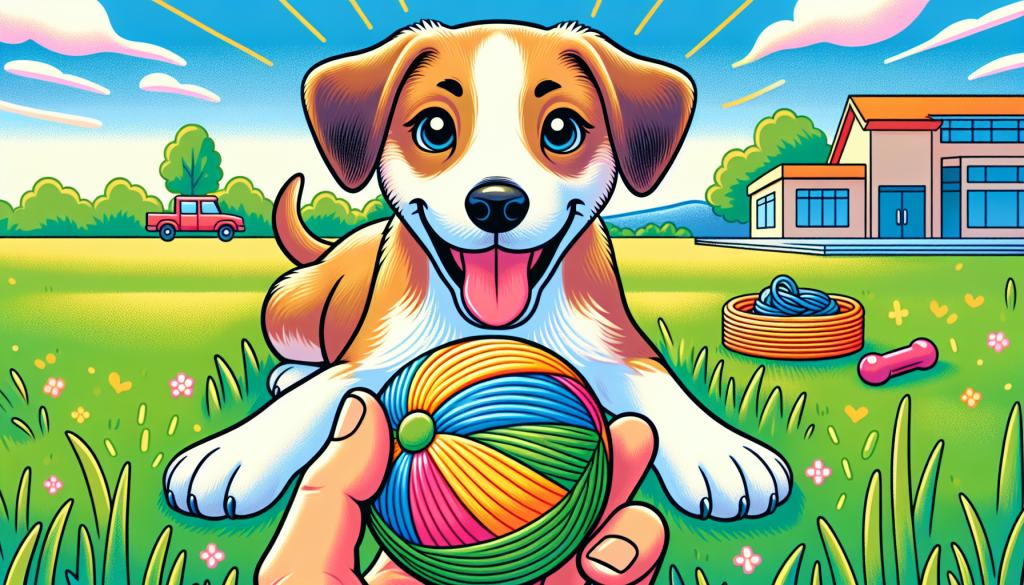So you have a new furry friend and you want to teach them the classic game of fetch? Don’t worry, it’s easier than you might think. Teaching your puppy to fetch is not only a great way to bond, but it’s also an excellent exercise for them. In this article, we will go over some simple steps that will help you successfully teach your adorable pup to fetch and retrieve their favorite toys. Say goodbye to endless games of tug-of-war and hello to the joy of watching your puppy chase after a ball and bring it back to you with a wagging tail.
Preparation
Choosing the right toys
When teaching a puppy to fetch, it is important to select the right toys. Look for toys that are suitable for your puppy’s size and breed. Choose toys that are easy for your puppy to grasp and carry in their mouth. Soft toys or balls made of durable materials are usually great options. Avoid toys with small parts that your puppy could chew off and swallow. It’s also important to have a variety of toys to keep your puppy engaged and interested in playing fetch.
Finding the right location
Selecting the right location for playing fetch is crucial. Choose an area that is spacious and free from any hazards or distractions that could potentially harm your puppy. An enclosed backyard or a dog park with a secure fence are ideal places to play fetch. Make sure the area is clear of any sharp objects, holes, or dangerous plants. This will ensure a safe and enjoyable training session for both you and your puppy.
Using positive reinforcement
Positive reinforcement is a key element in teaching a puppy to fetch. It involves rewarding your puppy with treats or praise to reinforce the desired behavior. Positive reinforcement helps your puppy associate fetching with a positive experience, making them more likely to repeat the behavior. Always have a generous supply of small, tasty treats on hand during training sessions. Use a happy and excited tone of voice to praise your puppy whenever they successfully retrieve the toy. This will motivate them and strengthen the bond between you and your furry companion.
Creating Interest in the Toy
Making the toy exciting
To create interest in the toy, make it seem exciting and appealing to your puppy. You can do this by adding a dash of enthusiasm and energy when presenting the toy to your puppy. Wiggle the toy back and forth or make it move in an exciting manner to catch your puppy’s attention. The more enticing and intriguing the toy appears, the more likely your puppy will be eager to chase and retrieve it.
Using treats to attract the puppy
Treats can be a powerful tool in attracting your puppy to the toy. Show your puppy a treat and then place it near or inside the toy. Encourage your puppy to interact with the toy and offer praise when they show interest in it. By associating the toy with a reward, your puppy will begin to see the toy as something positive and rewarding to engage with.
Playing with the toy yourself
One effective way to spark your puppy’s interest in the toy is to play with it yourself. Get down to your puppy’s level and demonstrate how much fun the toy can be. Toss the toy in the air, bounce it on the ground, or make enticing movements with it. Your puppy will be curious and want to join in on the fun. Seeing you enjoy the toy will make them more excited to play with it as well.
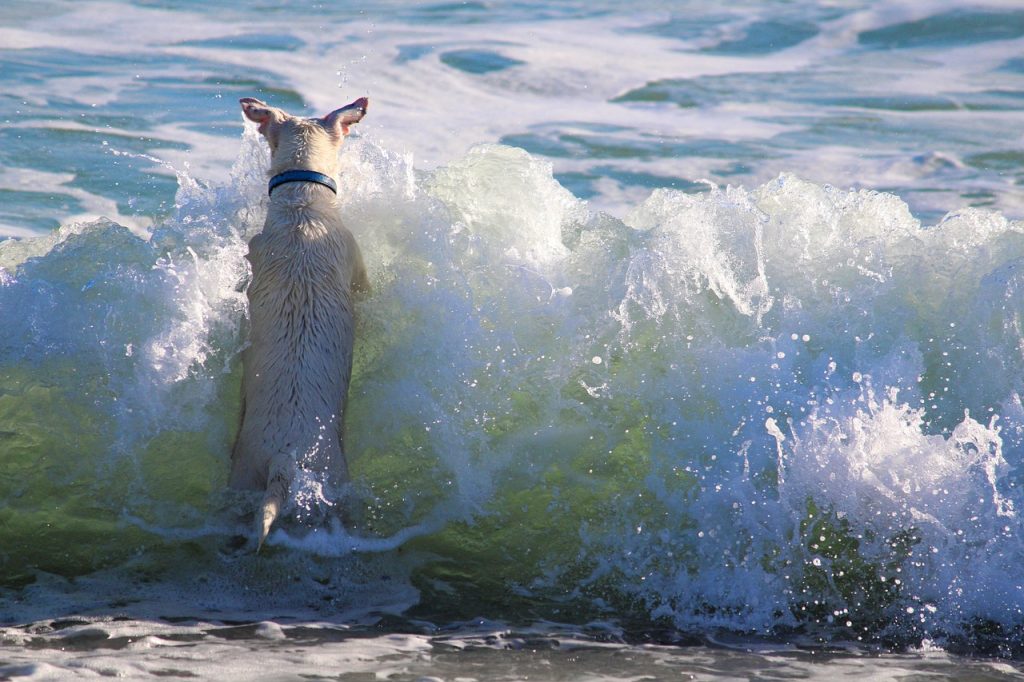
This image is property of pixabay.com.
Introducing the Fetch Command
Teaching the basics of ‘drop it’
Before you can effectively teach your puppy to fetch, it’s important for them to understand the command “drop it.” Begin by offering your puppy a toy or treat in exchange for the one they currently have in their mouth. Use a calm and firm voice to say “drop it” as you offer the new toy or treat. Praise your puppy when they release the toy and reward them promptly with the new item. Practice this command regularly to reinforce the behavior and build a foundation for fetching.
Introducing the ‘give it’ command
Once your puppy has mastered the “drop it” command, you can introduce the “give it” command. This command teaches your puppy to release the toy willingly into your hand. Hold out your hand and say “give it” as you offer a treat in exchange for the toy. Repeat the command and reward your puppy each time they give you the toy. This step is crucial in preparing your puppy for the next stage of fetching, as they will need to understand how to release the toy to you.
Connecting the command to fetching
After your puppy is comfortable with the “give it” command, begin connecting it to the act of fetching. Hold the toy in your hand and say “give it” as you toss the toy a short distance away. Encourage your puppy to retrieve the toy and bring it back to you. When they return to you with the toy, use the command “drop it” to have them release it into your hand. Practice this sequence of commands and actions consistently until your puppy starts to associate the “give it” command with fetching.
Teaching the Chase
Using a long leash for control
When teaching a puppy to fetch, it’s important to have control over their movements. Using a long leash can help you guide and restrict your puppy’s actions during the training process. Attach a long leash to your puppy’s collar or harness and hold onto the other end. This will allow you to guide your puppy to the toy if needed or prevent them from going off track during the fetching process. As your puppy becomes more proficient at fetching, you can gradually increase the length of the leash or eventually remove it altogether.
Throwing the toy a short distance
To start teaching your puppy the chase aspect of fetch, begin by throwing the toy a short distance away from you. Make sure your puppy can see the toy and use an excited and encouraging tone of voice to prompt them to go after it. Keep the throw short to prevent your puppy from getting overwhelmed or losing interest. This will allow them to build confidence and understand the concept of chasing the toy.
Encouraging the puppy to return
Once your puppy has chased after the toy, encourage them to return to you with the toy in their mouth. Use positive reinforcement techniques such as offering treats or praise to motivate your puppy to come back to you. Avoid chasing after your puppy or forcefully taking the toy from them. Instead, create an enjoyable and rewarding environment that entices your puppy to willingly return to you with the toy. Remember to be patient and encouraging during this process, as it may take time for your puppy to grasp the concept of returning with the toy.
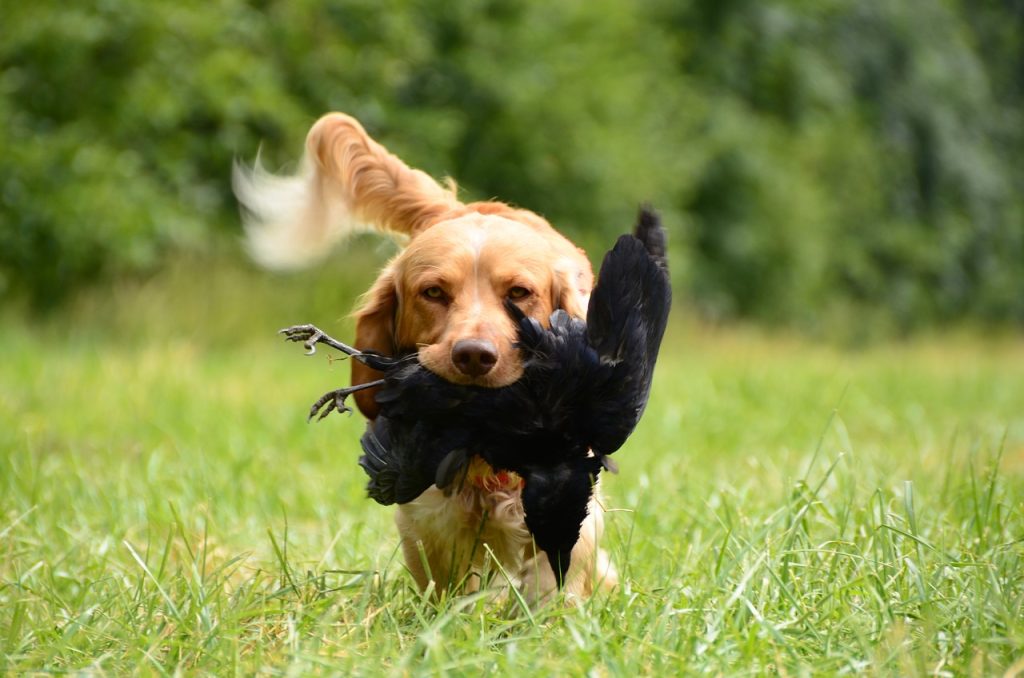
This image is property of pixabay.com.
Rewarding the Behavior
Giving treats and praise
Rewarding your puppy’s successful fetch behavior is essential for their learning process. Whenever your puppy brings the toy back to you, offer them a treat and praise them enthusiastically. This positive reinforcement will reinforce the desired behavior and make your puppy more eager to repeat it. Using treats that your puppy finds highly rewarding will make the training experience more enjoyable for them.
Using a clicker for positive reinforcement
In addition to treats and praise, using a clicker can be a valuable tool for positive reinforcement during fetch training. Clickers make a distinct sound that signals to your puppy that they have done something correctly. When your puppy retrieves the toy and brings it back to you, use the clicker at the exact moment they release the toy or as they approach you. This will help them understand that retrieving the toy and returning is the desired behavior.
Gradually reducing treats
As your puppy becomes more proficient at fetching, you can gradually reduce the frequency of treats given. This will help transition your puppy from relying solely on treats to being motivated by praise and the inherent enjoyment of playing fetch. However, it is important to still provide occasional treats to reinforce the behavior and keep your puppy engaged. Each puppy is unique, so adjust the treat frequency based on your puppy’s progress and motivation level.
Increasing the Difficulty
Throwing the toy further distances
As your puppy becomes more confident and skilled at fetching, gradually increase the distance you throw the toy. This will challenge them physically and mentally, helping them develop their retrieval skills. Start with short distances and gradually work your way up. Always encourage and praise your puppy when they successfully retrieve the toy, regardless of the distance.
Introducing obstacles
To make the game of fetch more interesting and challenging, introduce obstacles into the training sessions. You can place cones or small hurdles in the fetch area that your puppy needs to navigate around or jump over to retrieve the toy. By introducing obstacles, you are helping your puppy develop problem-solving skills and agility while keeping the game engaging and fun.
Playing fetch in different locations
To further increase the difficulty level and maintain your puppy’s interest, vary the locations where you play fetch. Take your puppy to different parks or open spaces, each with its unique terrain and distractions. This will expose them to different environments and help generalize the fetching behavior. It will also prevent your puppy from becoming too accustomed to one specific location, ensuring they can fetch successfully in various settings.
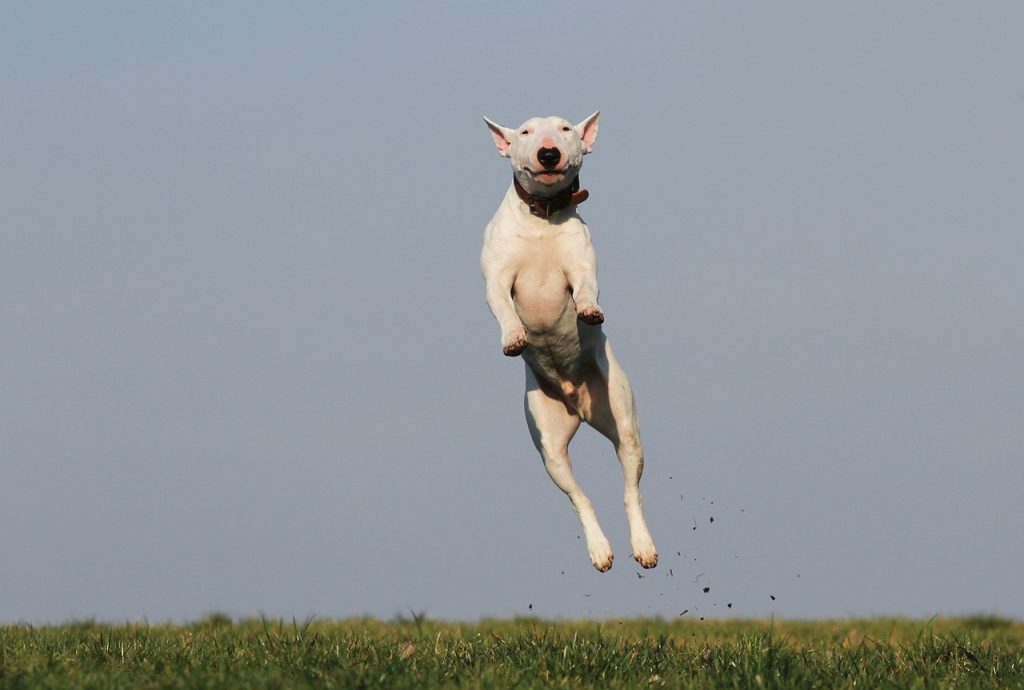
This image is property of pixabay.com.
Encouraging Independence
Letting the puppy find and fetch the toy alone
As your puppy becomes more confident in their fetching abilities, gradually encourage them to find and fetch the toy on their own. Instead of throwing the toy directly to your puppy, toss it a short distance away and allow them to retrieve it independently. This promotes problem-solving skills and encourages your puppy to think for themselves, increasing their independence during the game of fetch.
Rewarding the puppy for successful retrieval
When your puppy successfully retrieves the toy on their own, make sure to reward them with treats and praise. This reinforces the independent behavior and encourages them to continue fetching without constant guidance. By rewarding successful retrieval, you are reinforcing their capabilities and building their self-confidence.
Increasing the toy’s value over time
To keep your puppy engaged and motivated, gradually increase the value of the toy over time. Introduce new toys or play with the same toy but in different ways, such as squeaking or tossing it differently. By increasing the value of the toy, you make the game of fetch more enticing and exciting for your puppy, ensuring they remain eager to participate.
Addressing Common Challenges
Puppy losing interest
If your puppy starts to lose interest in fetch, it’s important to assess the situation and figure out why. It could be due to fatigue, distractions, or simply boredom. Take breaks between fetch sessions to give your puppy a chance to rest and recharge. Minimize distractions in the environment and make sure to play fetch in short, engaging sessions. Introducing new toys or changing up the game can also help reignite your puppy’s interest and motivation to fetch.
Puppy chewing on the toy
Puppies may occasionally chew on the toy instead of bringing it back to you. This can be addressed by redirecting their attention and reinforcing the “give it” command. When your puppy starts chewing on the toy, offer them a treat or a toy that is more appropriate for chewing. Use the “give it” command and reward them when they release the chewed toy. Consistency and patience are key in teaching your puppy to differentiate between chewing and fetching behaviors.
Puppy not bringing the toy back
If your puppy doesn’t bring the toy back to you, try using the “come” command or patting your leg to encourage them to return. Make sure to approach the situation with a positive and encouraging tone. If your puppy still resists bringing the toy back, go to them instead and gently guide them back to you using the leash. Reward and praise them once they successfully return with the toy. It may take time and repetition, but with consistent training and positive reinforcement, your puppy will learn to bring the toy back willingly.
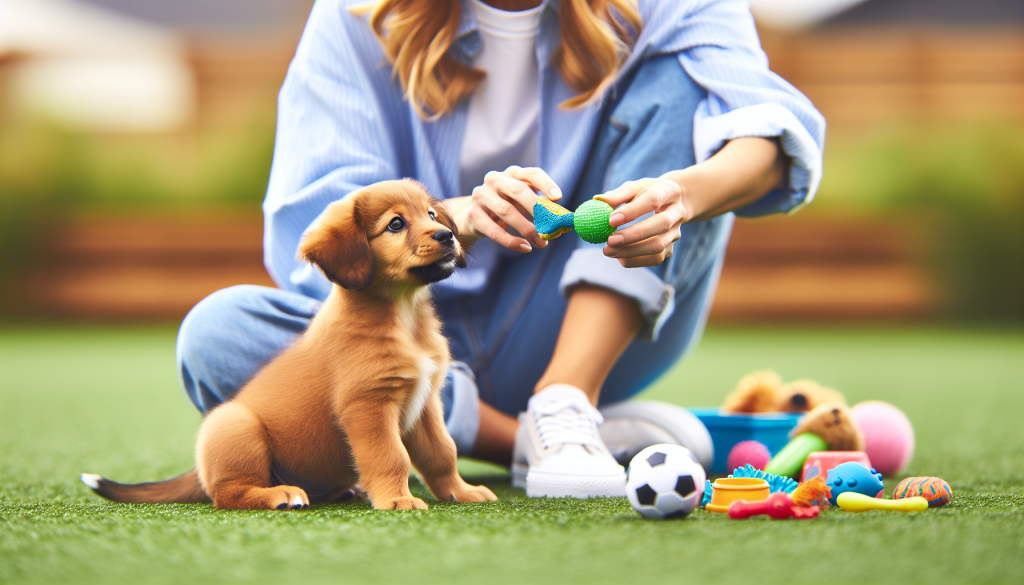
Maintaining Consistency
Establishing a regular training schedule
Consistency is crucial when teaching a puppy to fetch. Establish a regular training schedule that includes dedicated time for fetch sessions. Set aside multiple short training sessions throughout the day to avoid overwhelming your puppy. Consistency not only helps your puppy understand the routine but also allows them to develop their skills progressively.
Using the same commands and cues
Using consistent commands and cues is fundamental in teaching a puppy to fetch. Stick to the same words and gestures for commands such as “give it,” “drop it,” and “fetch.” This will help your puppy associate specific actions with each command and minimize confusion. Remember to use a clear and distinctive tone of voice to ensure your puppy understands and responds to your commands effectively.
Reinforcing the behavior regularly
Once your puppy has learned to fetch, it’s important to reinforce the behavior regularly. Set aside time each week for fetch sessions, even after your puppy has become proficient at it. Continuing to practice the behavior will help maintain your puppy’s skills and ensure they stay engaged and motivated. Regular reinforcement also allows you to address any potential regression or challenges that may arise.
Having Patience and Persistence
Understanding that training takes time
Teaching a puppy to fetch requires patience and understanding. Every puppy progresses at their own pace, so it’s important to be patient throughout the training process. Some puppies may pick up the concept quickly, while others may require more time and repetition. Stay consistent, offer encouragement, and trust that your puppy will eventually grasp the concept of fetch.
Being patient with the puppy’s progress
Just like humans, puppies learn and develop skills at their own pace. Be patient with your puppy’s progress and avoid rushing them. Celebrate small victories along the way and focus on gradual improvement rather than expecting immediate perfection. Positive reinforcement and patience will go a long way in helping your puppy reach their full potential in fetching.
Persisting through setbacks
Setbacks are a natural part of the training process. Your puppy may face challenges or have moments of regression during their journey to learn how to fetch. It is crucial to persist through these setbacks and not get discouraged. Continue with consistent training, reinforce positive behaviors, and seek guidance or advice from professional trainers if needed. With perseverance and a positive mindset, you and your puppy can overcome any obstacles and achieve success in fetch training.
Remember, teaching your puppy to fetch is not only a fun and engaging activity, but it also helps develop their physical and mental capabilities. Building a strong foundation in fetch training will not only strengthen the bond between you and your puppy but also provide them with a lifelong skill that brings happiness and fulfillment to their everyday life. So grab some toys, find a suitable location, and embark on this exciting journey of teaching your puppy to fetch!
